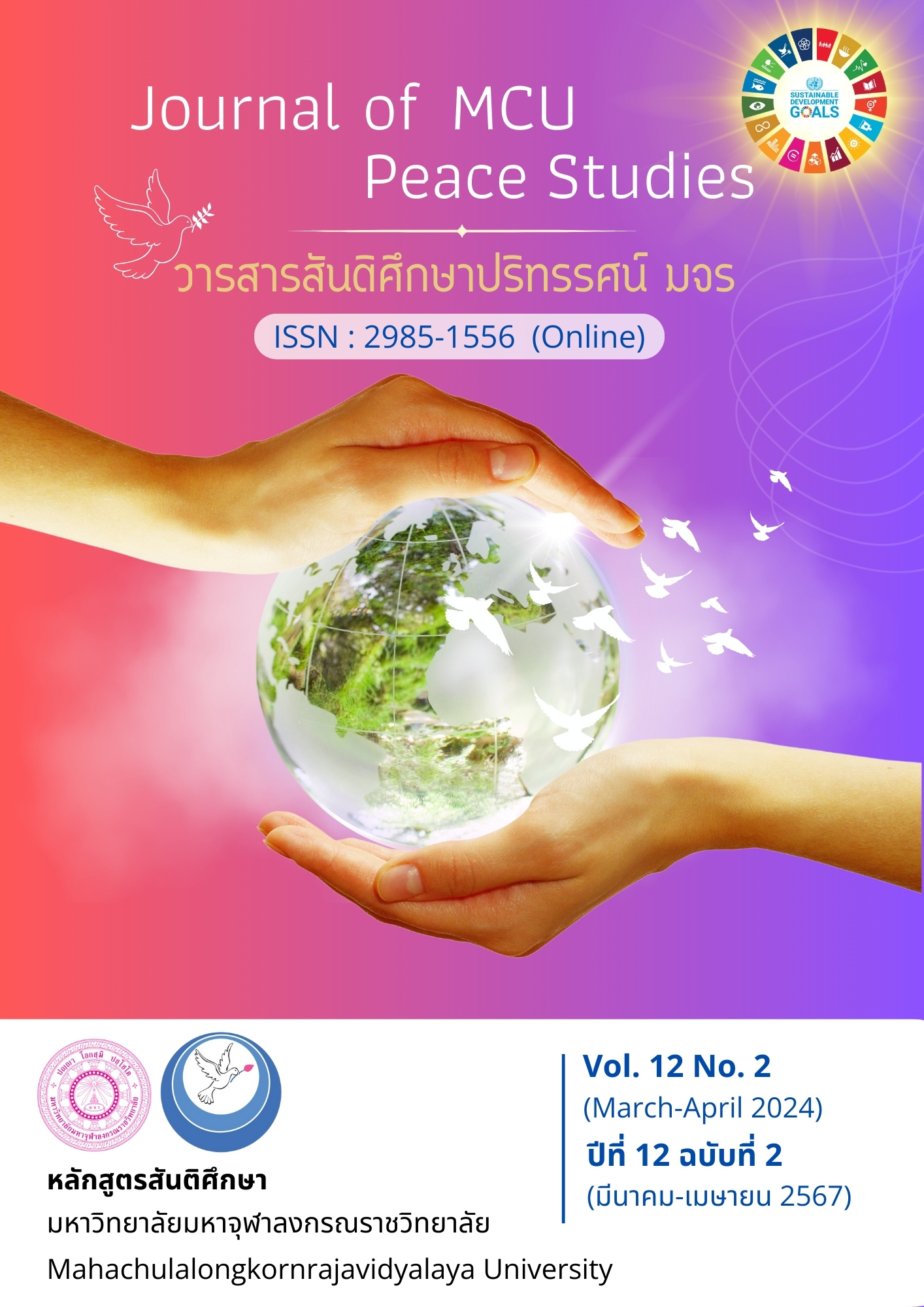Developing a Model of the Learning Experience Management Process to Develop Computational Thinking Skills for Early Childhood Children to Creative Innovations
Main Article Content
Abstract
This research article aims to 1) to develop a model of the learning experience management process to develop computational thinking skills for early childhood children to creative innovations with participation of educational institutions 2) to study the use of a model of the learning experience management process to develop computational thinking skills for early childhood children to creative innovations 3) to evaluate creative innovation work pieces of kindergarten level students. The target research groups were kindergarten 2-3 students at Wat Bamphenbun School and Wat Chan School obtained by means of purposive selection. Statistics used in this research including percentage, mean, standard deviation, and t-test with dependent samples.
The results of the research found that 1) the quality of the components of the process model for organizing learning experiences to develop computational thinking skills for early childhood children to creative innovations that the researcher had developed has an average of quality values from the assessment of early childhood education and technology experts' opinions, a total of 6 people, overall agreed that the quality was at the highest level ( =4.78, S.D.= 0.35) 2) the pre-test and post-test of kindergarten 2-3 students at Wat Bamphenbun School and Wat Chan School found that post-test scores are statistical significant higher than pre-test at .05 and 3) the results of evaluation of creative innovative work pieces of kindergarten 2-3 students at Wat Bamphenbun School was found that the average was 8.065. (S.D.= 0.64) and evaluation of creative innovative work pieces of kindergarten 2-3 students at Wat Chan School was found that the average was 7.90 (S.D.= 0.73)
Article Details

This work is licensed under a Creative Commons Attribution-NonCommercial-NoDerivatives 4.0 International License.
Views and opinions expressed in the articles published by The Journal of MCU Peace Studies, are of responsibility by such authors but not the editors and do not necessarily reflect those of the editors.
References
Angsrisurapon, K. (2023). Development of a Process Model for Organizing Learning Experiences to Develop Computational Thinking Skills for Early Childhood Children towards Creative Innovative Products. Bangkok: Research and Development Institute Chandrakasem Rajabhat University.
Institute for the Promotion of Teaching Science and Technology (IPST). (2018). Computational Science Learning Management Curriculum for Advanced Teachers C4T Plus. Retrieved May 3, 2013, from https://oho.ipst.ac.th/category/discipline/วิทยาการคำนวณ/
Ministry of Education. (2022). Guidelines for Organizing Active Learning (Active Learning) at the Early Childhood Level. Bangokok: Office of Academic and Educational Standards Office of the Basic Education Commission, Ministry of Education.
Niyomchai, P., & Raksaphongphanich, T. (2023). Coding Program for Problem Solving in Young Children. Journal of MCU Ubon Review, 8(2), 399-408.
Office of the Education Council. (2018). Guidelines for Raising, Caring for, and Developing Early Childhood Children According to Competency to Increase the Quality of Children According to Age 0-5 Years. Bangkok: Phrik Wan Graphic Company Limited.
Pankaew, A. (2015). Development of the Click Teaching Model to Promote Intellectual Crystallization Ability for Undergraduate Students Field of Early Childhood Education. (Doctoral Dissertation). Graduate School Srinakharinwirot University. Bangkok.
Sophonpanich, K. (2021). Khunying Kanlaya Sophonpanich: Create ‘Coding’ To Cope with Every Change. Retrieved May 3, 2013, from https://www.matichon.co.th/politics/special-interview/news_3124407
Su, J., & Yang, W. (2023). A Systematic Review of Integrating Computational Thinking in Early Childhood Education.Retrieved May 3, 2013, from https://www.sciencedirect.com/science/article/pii/S2666557323000010?via=ihub

